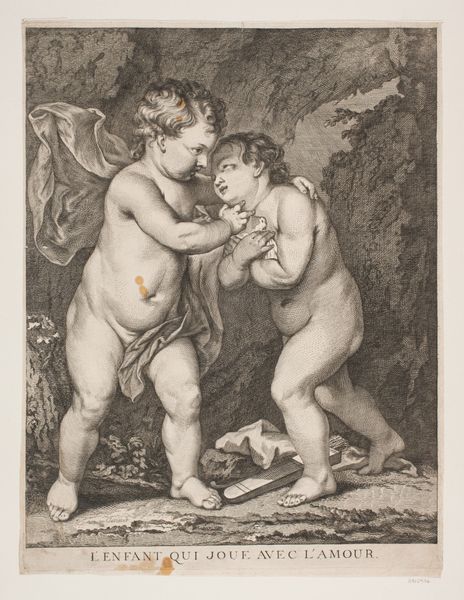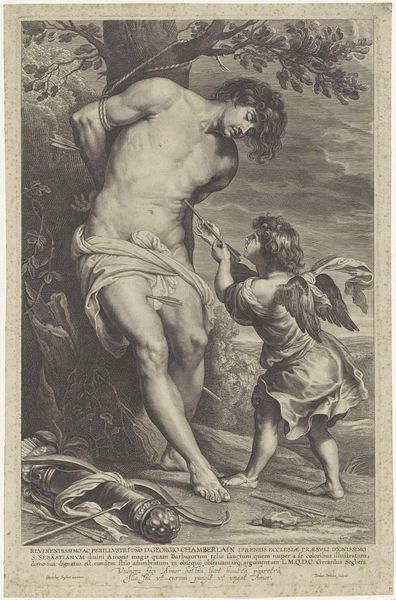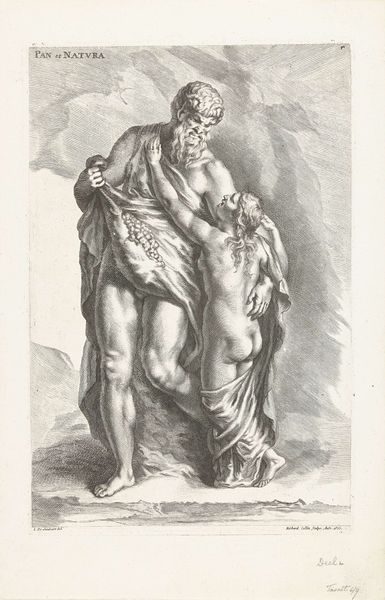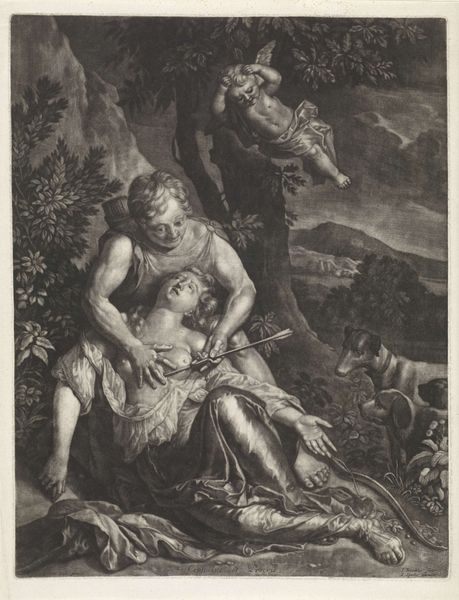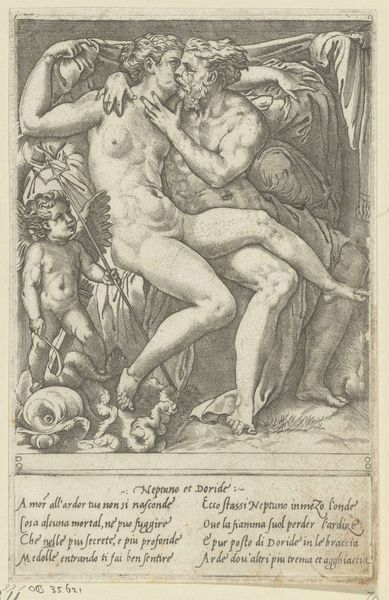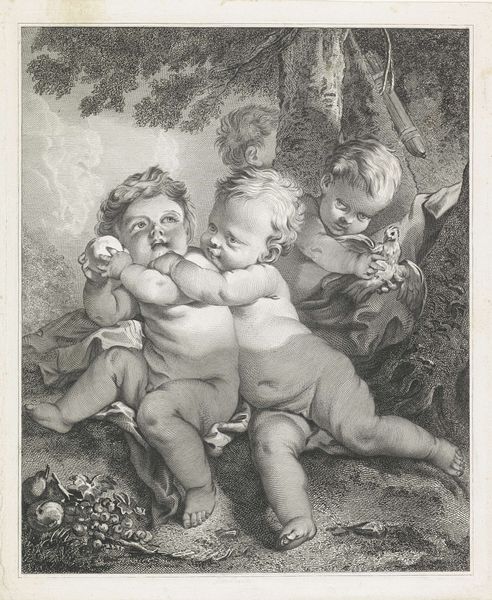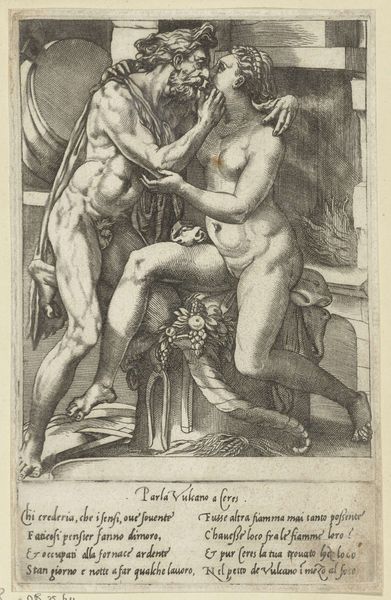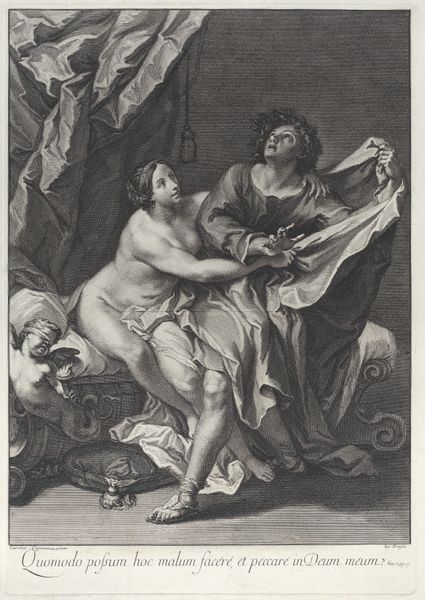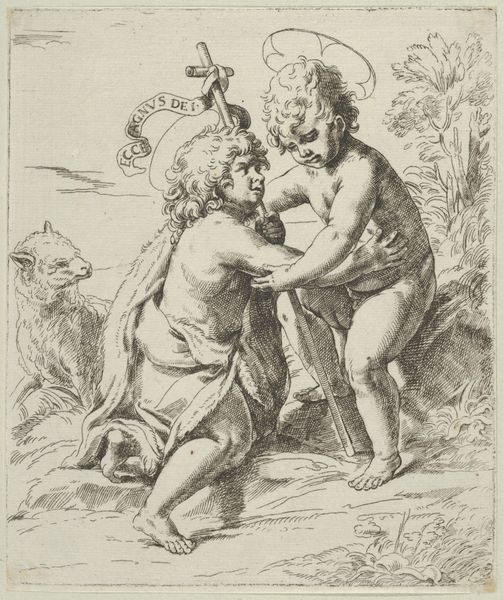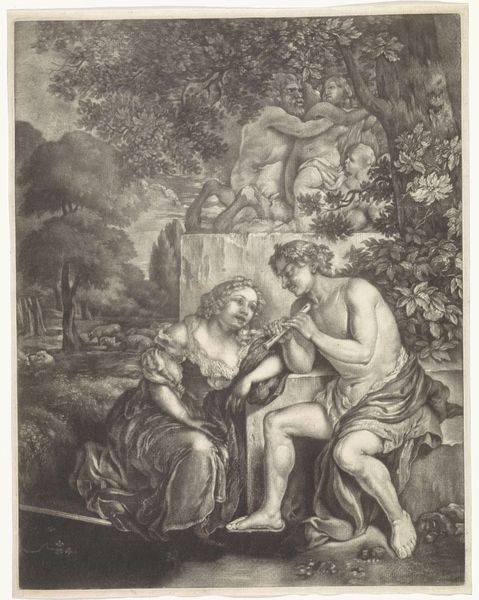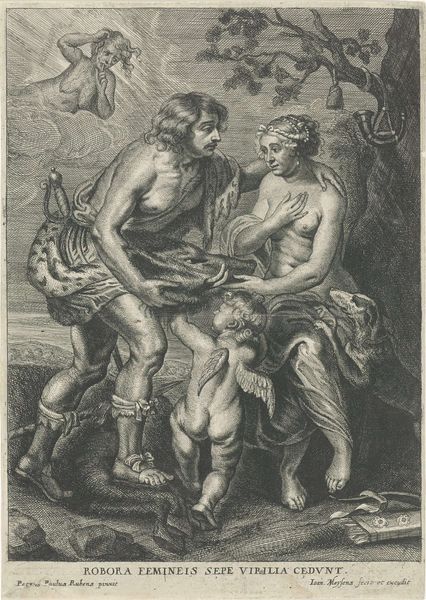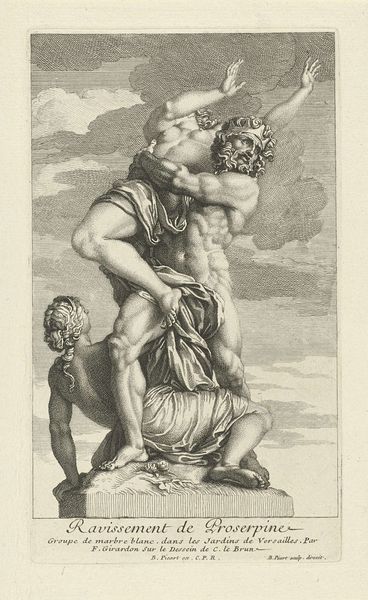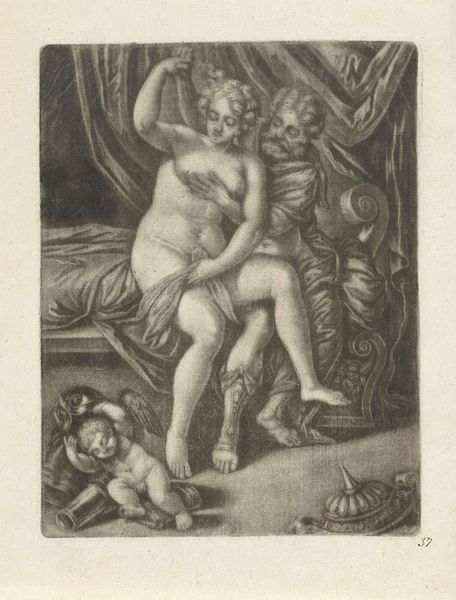
engraving
#
baroque
#
portrait image
#
charcoal drawing
#
figuration
#
portrait drawing
#
history-painting
#
nude
#
engraving
Dimensions: height 451 mm, width 334 mm
Copyright: Rijks Museum: Open Domain
Arnold de Jode made this print, "Christuskind en Johannes de Doper," using engraving techniques. Here, the artist incised lines into a metal plate, likely copper, with a tool called a burin. The depth and spacing of these lines determined the amount of ink held, and thus the darkness of the printed mark, allowing for subtle gradations of tone. The printmaking process itself suggests a particular mode of production. Unlike unique paintings or sculptures, prints are inherently reproducible, aligning them with the rise of mass media and distribution. De Jode’s skilled hand was essential, yet the final product could be disseminated widely, impacting religious and social spheres. Consider, too, the labor involved. The engraver's patient work contrasts with the ease of consumption. Such considerations invite us to reflect on the social context of artmaking, and question conventional boundaries between art and craft.
Comments
No comments
Be the first to comment and join the conversation on the ultimate creative platform.
